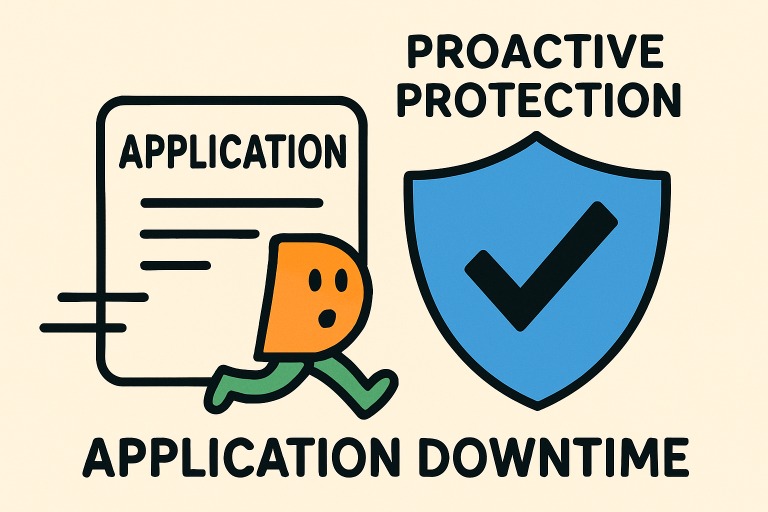Proactive Strategies for Preventing Application Downtime
Introduction
Application downtime remains one of the most expensive setbacks organizations encounter today. Even brief outages can disrupt operations, reduce revenue, and damage user trust. To minimize these risks, companies must prioritize complete visibility and swift response strategies that keep systems stable and reliable. Utilizing tools like https://www.eginnovations.com/product/application-performance-monitoring helps IT teams detect potential problems early, enabling a proactive approach that safeguards performance and prevents issues from escalating into full-blown disruptions. This foresight ensures smoother operations and greater continuity for both users and businesses.
A proactive and layered strategy that balances advanced technology, resilient infrastructure, and a well-prepared team is the foundation for reducing downtime. Organizations can reduce vulnerabilities and foster digital business continuity by implementing preventive measures, from real-time monitoring to disaster recovery plans.
These practices empower teams to stay ahead of performance bottlenecks, avoid costly outages, and ensure a seamless user and stakeholder experience. Let’s explore the key strategies any serious digital operation should adopt to preempt rather than react to outages.
Monitoring and Alerting
Modern IT infrastructures are complex, and preventing downtime hinges on real-time monitoring of the right metrics. Comprehensive monitoring covers application performance, server health, network activity, and external dependencies. Automated alerting systems set with thresholds for CPU usage, memory, error rates, and response time enable instant notification if anomalies or performance degradation occur. Early detection allows technical teams to act before users are affected. Popular choices for proactive monitoring include tools like Prometheus, Datadog, and open-source solutions, which deliver insightful dashboards and detailed root-cause analysis.
Auto-Scaling for Traffic Spikes
Traffic patterns are rarely constant, and sudden surges—caused by marketing events, viral content, or organic growth—can overload server resources. Auto-scaling ensures your application infrastructure can expand and contract based on real-time demand. With auto-scaling, additional instances are seamlessly spun up as load increases, and resources are pared down when demand subsides, reducing costs without sacrificing availability. Many cloud providers offer built-in auto-scaling solutions that can be configured quickly to protect against slowdowns and crashes during peak times.
Continuous Integration and Deployment
Implementing Continuous Integration and Deployment (CI/CD) allows development teams to streamline the build, testing, and release process, reducing human error and minimizing risk. Automated testing ensures defects are detected earlier, and rollback mechanisms make recovery fast and safe if faulty code reaches production. Popular CI/CD pipelines such as Jenkins, GitLab CI/CD, and CircleCI provide structured, repeatable, and reliable software releases, reducing business disruptions caused by untested changes or manual deployment failures.
Keeping deployment pipelines agile and well-integrated with version control lowers the chances of system conflicts and compatibility issues, which are key contributors to downtime. Visit TechRepublic’s DevOps guide for more strategic insights on modern DevOps and deployment best practices.
Load Balancing
Load balancing is pivotal in maintaining seamless performance and ensuring systems remain highly available, even under heavy demand. Intelligently distributing incoming traffic across multiple backend servers prevents overload on any single machine and reduces the chance of downtime. Both hardware and software load balancers continuously monitor server health, rerouting requests away from underperforming or failed nodes. This proactive adjustment minimizes bottlenecks and maximizes throughput, creating a smoother user experience. Effective load balancing is essential to achieving consistent reliability and scalability for mission-critical applications—such as e-commerce, banking, or healthcare—where downtime equates to lost revenue or compromised services.
Regular Backups and Disaster Recovery
Even with robust uptime strategies, unforeseen failures such as data corruption, hardware malfunctions, or cyberattacks can occur. Regular, automated backups—combined with a well-documented disaster recovery (DR) plan—are essential for restoring business operations quickly. Organizations should schedule backups offsite or in the cloud and periodically test their DR processes for speed and accuracy. Adequate backup and recovery policies minimize data loss and accelerate incident response.
Routine Maintenance and Updates
Regularly updating software, frameworks, and infrastructure reduces security risks and ensures optimal system performance. Outdated components often serve as entry points for cyberattacks, making timely patches and upgrades a critical safeguard. Beyond security, these updates enhance applications’ efficiency, stability, and compatibility. Implementing routine system health checks and preventive maintenance helps IT teams detect minor issues early, preventing them from escalating into costly outages. Scheduling critical updates and planned downtime during off-peak hours minimizes disruptions while maintaining consistent availability. For best practices, resources like IBM Cloud offer guidance on developing and enforcing effective maintenance window policies.
Employee Training and Incident Drills
Human error remains a leading cause of service outages across industries, often resulting from misconfigurations, overlooked details, or insufficient preparation. Consistent training for IT staff and developers is one of the most effective strategies to minimize this risk. Regular sessions focused on system operations, best practices, and clear incident response procedures equip teams with the knowledge to avoid preventable mistakes. Beyond classroom-style training, hands-on incident simulation drills provide real-world practice in handling potential disruptions. These exercises strengthen collaboration, improve decision-making under pressure, and ensure staff can respond quickly, efficiently, and confidently when unexpected outages occur.
Implementing Redundant Systems
Redundancy in system design means duplicating critical components so that if one fails, others immediately take over. This might include redundant servers, diversified network paths, multiple data center locations, and failover mechanisms that facilitate seamless service continuity. Robust redundancy strategies not only maximize uptime but also protect against localized outages or hardware failures that could otherwise bring operations to a halt.
By consistently implementing proactive strategies such as advanced monitoring tools, team skill development, and structured response planning, organizations create a strong foundation for dependable application performance. Each reinforced layer of the technology stack helps minimize risks, address weaknesses, and ensure operational stability. This systematic approach safeguards against downtime and enhances user satisfaction and loyalty. Ultimately, these measures enable businesses to maintain seamless digital experiences, adapt to evolving demands, and achieve sustained growth in today’s fast-paced, technology-driven landscape.







